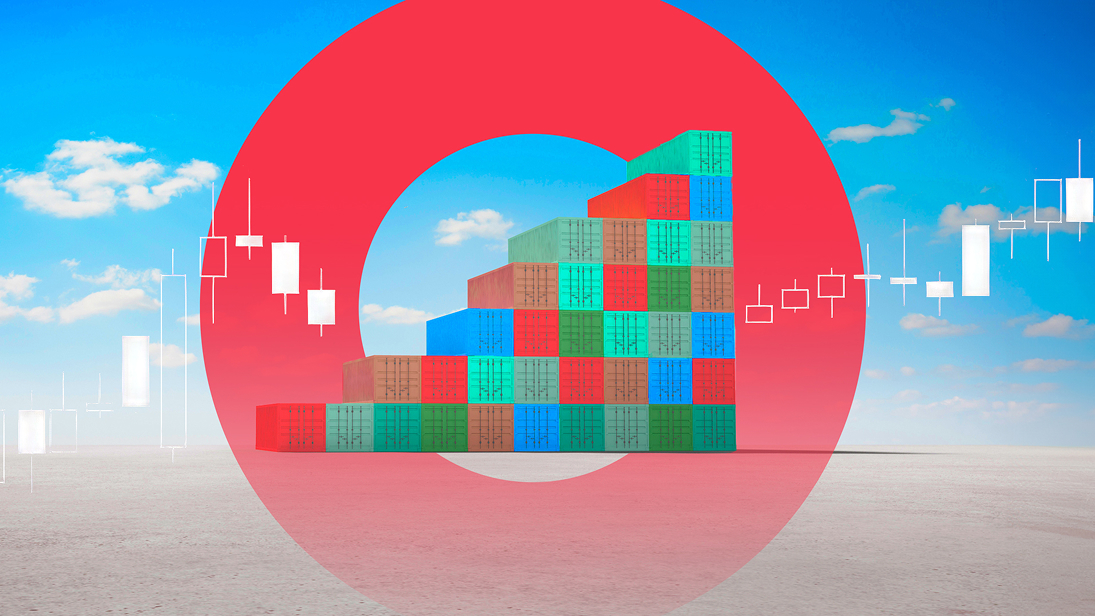What issue can we solve for you?
Type in your prompt above or try one of these suggestions
Suggested Prompt


5 Supply Chain Industry Trends for 2025


From health crises and geopolitical conflicts to increasingly frequent extreme weather events, disruption has become the new normal for supply chains. The first half of this decade has exposed vulnerabilities and inefficiencies in supply chains, forcing companies to rethink their strategies to remain competitive and resilient.
The year ahead promises to be no different. Though the challenges may be unique and unknown, the key to success will be the same: adaptability. The ability to swiftly respond to disruptions, integrate advanced technologies and align with shifting market expectations has become more important than ever.
So, what will 2025 bring—and how will adaptability be key to supply chains’ success?


Visibility and resiliency in supply chains will be even more important than ever
In March 2024, Baltimore’s Francis Scott Key Bridge collapsed, bringing the city’s bustling port to a standstill. No one could have predicted the disaster, but having contingency plans in place ensured that the supply chain could keep going.
The collapse may have been a unique incident, but it represents the disruption that supply chains are increasingly facing. In this climate, gaining visibility into supply chains and ensuring they are resilient will determine how functional they are under extreme circumstances. In practice, this means companies need to invest in technologies that provide real-time visibility into their supply chains, enabling them to anticipate and mitigate disruptions. This is true throughout the supply chain. Companies need end-to-end visibility, including both contracted partners and upstream suppliers.
Technologies—such as Internet of Things (IoT) devices and blockchain—can help companies identify potential bottlenecks and delays, allowing them to take proactive measures to ensure continuity. By leveraging these technologies, businesses can improve their ability to respond swiftly to any issues that arise, minimizing the impact on their operations and customers.


Automation will revolutionize storage and retrieval
Artificial Intelligence (AI) and automation are impacting every industry, and supply chains are no exception. From demand forecasting to process automation, AI enables companies to optimize their supply chains, improve efficiency and simplify life for both employees and customers. In logistics, for example, AI can optimize delivery routes based on real-time traffic data, reducing fuel consumption and improving delivery times.
Automation goes beyond chatbots and logistics to transform the workforce and machinery that keep supply chains up and running. Robotic systems can accelerate retrieval processes to deliver products to customers faster while ensuring that distribution centers are never short-staffed.
Companies are also exploring the use of AI for predictive maintenance of equipment and quality control in manufacturing. For instance, AI algorithms can analyze historical data to predict when a machine is likely to fail, allowing for timely maintenance that prevents costly downtime. In manufacturing, AI-powered vision systems can inspect products for defects, ensuring high quality and reducing waste.
As companies continue to invest in AI and automation, they can expect to see significant improvements in efficiency, accuracy and customer satisfaction. These technologies not only streamline operations but also provide valuable insights that help businesses make better decisions and stay ahead of the competition.

How will 2026 impact your industry?
Find out in the Guide to Next 2026 report.


Sustainability will remain a top concern for customers
Driven by customer expectations and corporate commitments, efforts to promote sustainability in the business world are becoming increasingly common. Between 2020 and 2021, the number of companies that employed chief sustainability officers tripled, demonstrating just how prevalent concerns over sustainability have become.
Indeed, consumers value transparency when it comes to sustainability. According to 2023 Publicis Sapient research, 50 percent of consumers trust companies that are fully transparent about where their materials came from and how their products were produced, versus only 34 percent who trust companies that simply identify which of their products were produced sustainably.
In this context, maintaining sustainable supply chains will go a long way in building consumer confidence. E-commerce retailers like Amazon, for example, have integrated sustainability into the customer experience by offering options to minimize the number of shipments a shopper receives, reducing waste and fuel consumption.
Companies must have processes in place to measure and manage their own sustainability efforts, and digital tools can provide a snapshot of their carbon footprint and other insights into how their shipping routes impact the environment.
By integrating sustainability into their supply chains, businesses can meet customer expectations and contribute to global efforts to combat climate change. Additionally, sustainable practices can lead to cost savings through improved efficiency and resource management. For example, reducing energy consumption and waste helps companies lower their operational costs and enhance their reputation as environmentally responsible.


Customer expectations will continue to shift
In the past, customers prioritized cost and convenience. Today, they demand fast, personalized and sustainable services that don’t come with added cost—including shipping. Supply chains are increasingly becoming part of the selling experience, as customers are now exposed to how quickly they can receive the products they want during both the browsing and shopping process.
To meet these evolving expectations, companies must invest in technologies that enhance their supply chain capabilities. For instance, companies are using data to analyze customer behaviors and predict demand patterns, allowing them to stock the right products in the right quantities at the right locations. This ensures that customers can find what they need when they need it. Additionally, companies are leveraging last-mile delivery solutions to offer faster and more flexible delivery options.
Moreover, businesses are enhancing their customer service by providing real-time updates on order status and delivery times. This transparency builds trust and enhances the overall customer experience, leading to higher satisfaction and loyalty.


Supply chain as a service (SCaaS) will create new opportunities
The concept of SCaaS is gaining traction as companies seek flexible and scalable solutions for their supply chain needs. SCaaS allows businesses to leverage the expertise and infrastructure of third-party logistics providers without the need for extensive capital investment. This approach can be especially useful for companies that are expanding into new geographic areas or experiencing rapid growth.
By partnering with these providers, companies can access state-of-the-art technology and infrastructure, allowing them to scale quickly and adapt to changing market demands. SCaaS offers the flexibility and efficiency that businesses need to remain competitive in today's dynamic marketplace.
For example, a growing e-commerce company can partner with a third-party logistics provider to manage its warehousing, fulfillment and logistics operations. This allows the company to focus on its core competencies, such as marketing and product development, while leveraging the provider's expertise and resources to ensure efficient and reliable supply chain operations.
Additionally, SCaaS providers often offer advanced technologies, such as warehouse management systems and real-time tracking solutions. These technologies provide valuable insights and analytics, helping companies optimize their supply chain performance and make data-driven decisions.
What is the future of the supply chain industry? It starts now.
Supply chains that are adaptable will be best equipped to withstand whatever 2025 has in store. By embracing visibility and resiliency, experimenting with automation, promoting sustainability, keeping pace with customer expectations and understanding the possibilities that SCaaS offer, companies will be well-positioned to navigate the complexities of the modern supply chain landscape.
By investing in advanced technologies, updating legacy systems and leveraging flexible supply chain solutions, businesses can build resilient, efficient and customer-centric supply chains that drive success in 2025 and beyond.



